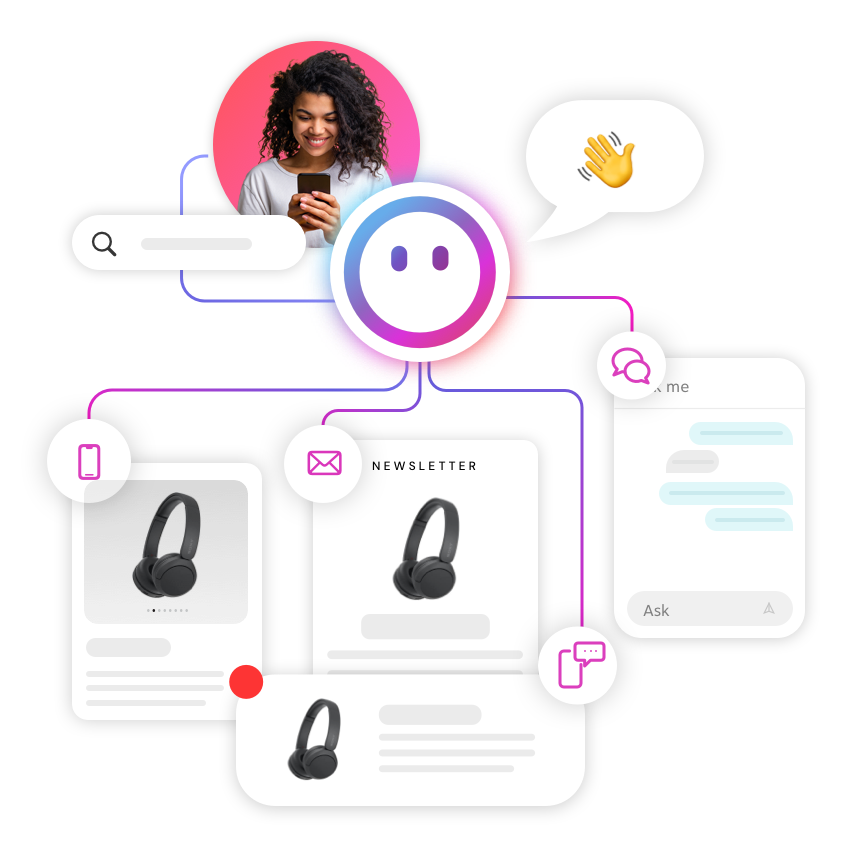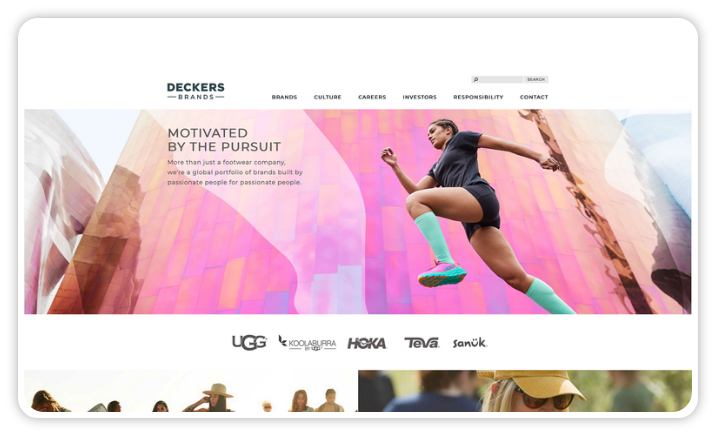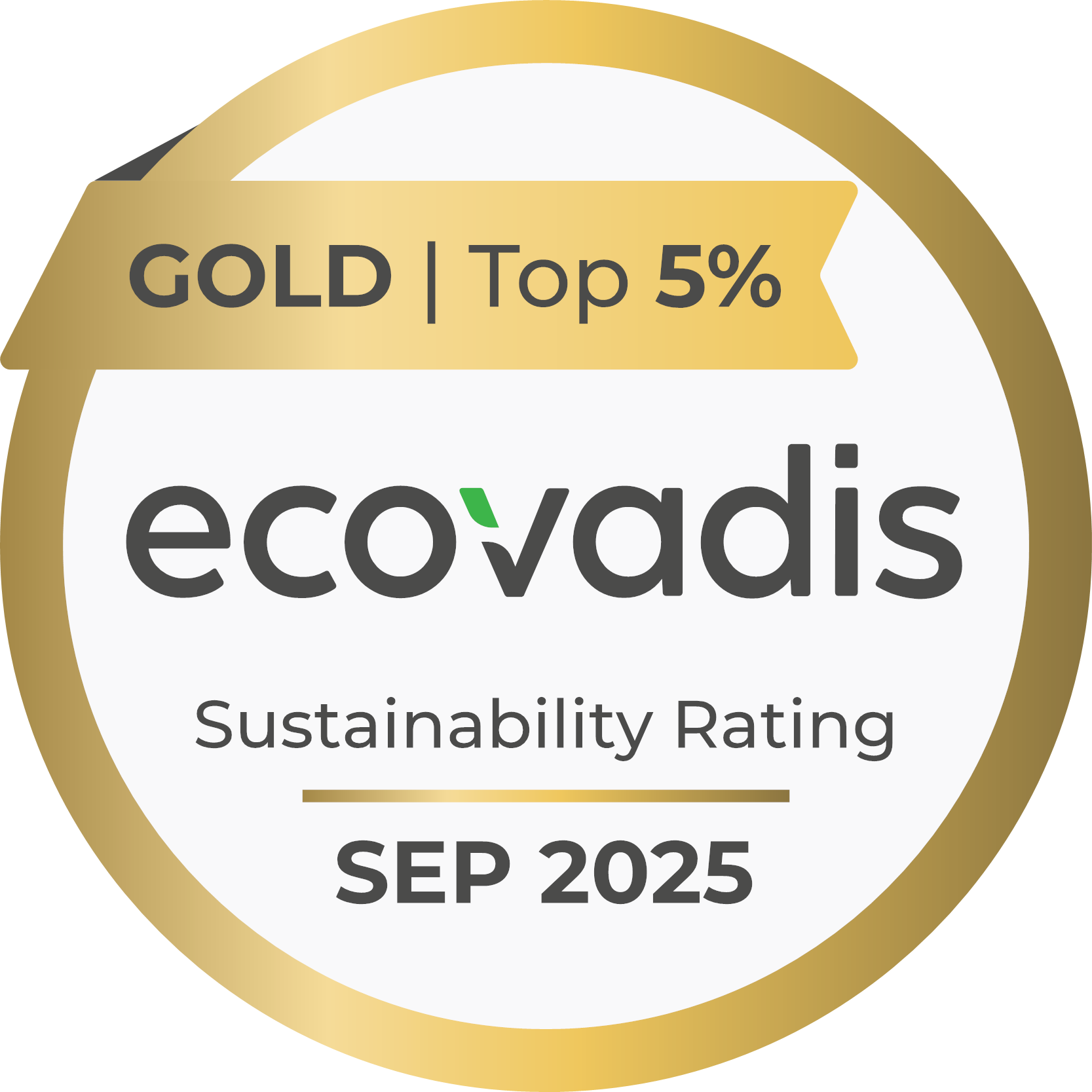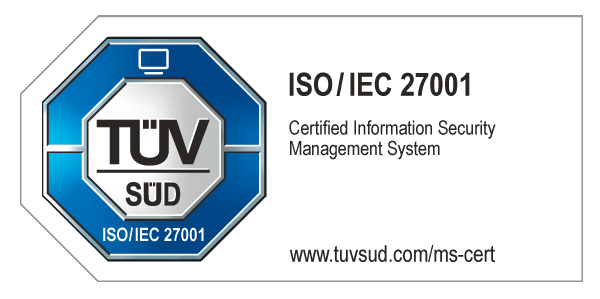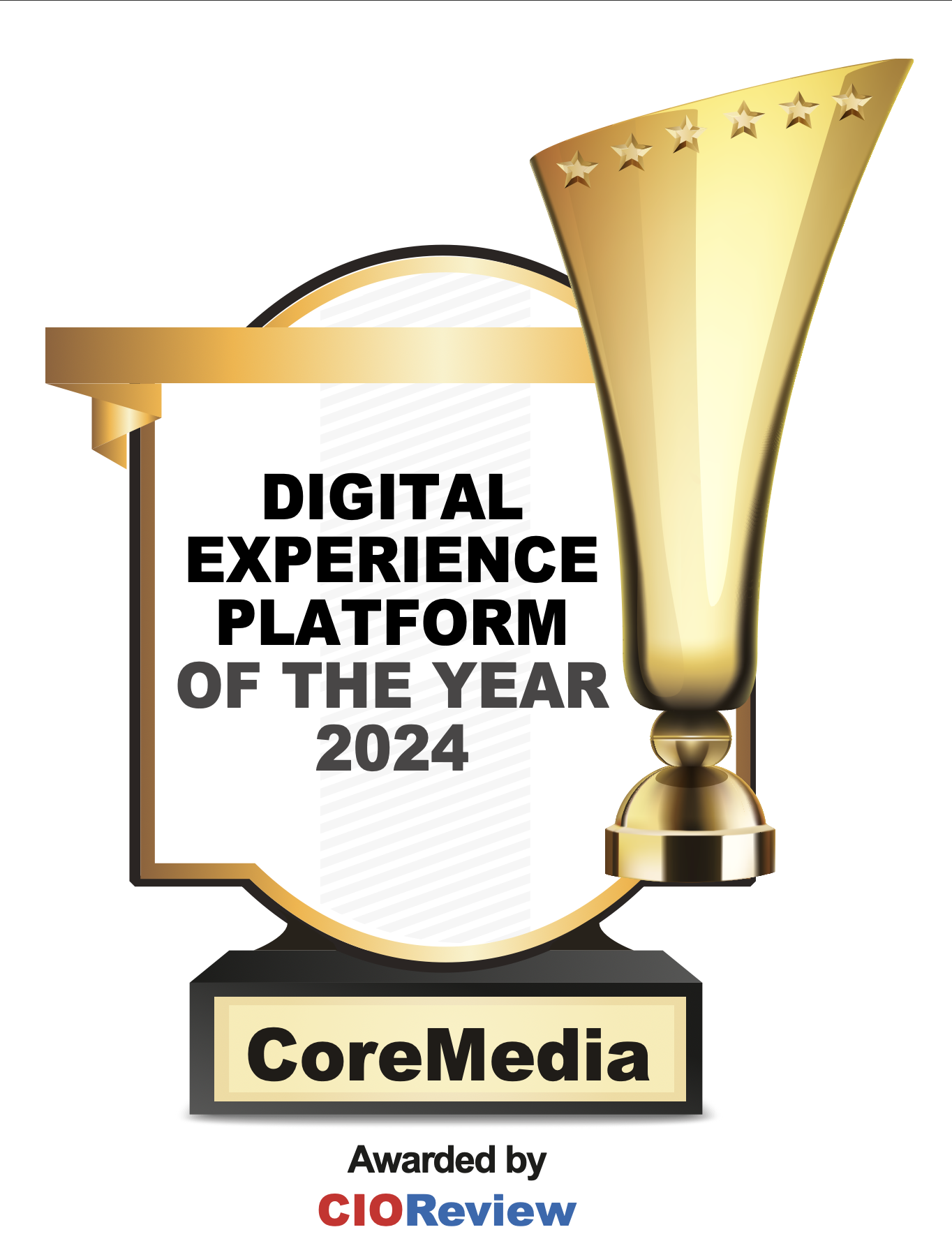This guide offers a comparison of the leading enterprise CMS platforms for 2026, based on up-to-date research and expert analysis. Our focus: helping you evaluate which platform best aligns with your strategic goals, tech architecture and content needs.
What to consider when choosing an enterprise CMS?
The way we build and manage digital experiences has changed, because expectations have changed. Customers now want personalized content, no matter where they are or what device they’re using. Marketers need tools that are fast and flexible. And developers want freedom to integrate, to build and to scale. But balancing these needs is not an easy task.
This is where modern CMS architectures come into play:
- Traditional CMS tightly couple the content back-end with front-end delivery (e.g. WordPress, classic Drupal).
- Headless CMS decouple content from presentation, enabling delivery to any front-end via APIs (e.g. Contentful).
- Hybrid Headless CMS offer the flexibility of headless with the usability of traditional systems (e.g. CoreMedia).
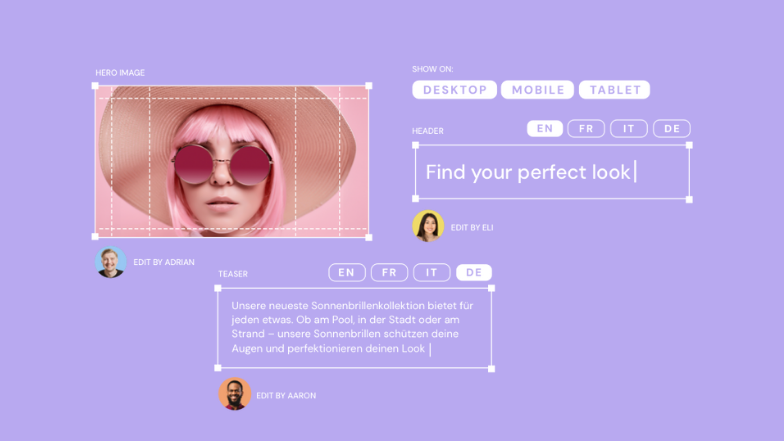
Must-have features for your enterprise CMS
Delivering content isn’t enough. Your CMS needs to be the engine behind every digital experience, and it should move with your business, not against it. That means being flexible enough to adapt as your strategy evolves but structured enough to keep everything and every team aligned. So, before you commit to your next platform, make sure it delivers what truly matters.
- Smart integrations
Not too monolithic, not too fragmented. Your CMS should offer a balanced architecture that integrates perfectly into your existing stack (CRM, commerce, analytics, DAM, CDP and more) without forcing you into a rigid vendor lock-in or a tangled web of microservices.
Look for platforms that provide out-of-the-box integrations with leading tools and give developers the freedom to build custom connections via APIs or SDKs. A hybrid headless approach often delivers this balance best.
- Predictable pricing
Avoid platforms that start cheap but escalate unexpectedly as usage increases. A transparent and predictable pricing model, ideally based on business value and not just API calls or traffic, helps you budget more accurately across teams and geographies. Make sure to account for hidden costs such as implementation, training, upgrades, and partner dependencies.
- Built to scale across channels, markets and brands
Global enterprises need a CMS that can manage multi-channel, multi-language and multi-market experiences from a single platform. This includes omnichannel delivery across websites, mobile apps, AI search, digital signage, social media, email and human-assisted touchpoints, such as live chat and call centers. Look for built-in localization, governance and publishing workflows that help central teams empower local markets without losing control.
- Data sovereignty and control
Your data is a strategic asset. So, where your content is stored — and who controls it — matters a lot. Especially for companies operating in regulated industries or regions with strict data protection laws (like GDPR or industry-specific mandates), your CMS should offer flexible deployment models — SaaS, private cloud, on-prem — and clear policies for data access, storage and portability. Open APIs and transparent data models are essential.
- Ready-to-use AI
AI is now a requirement, but it needs to be usable, on-brand and safe. The best CMS platforms offer native AI features that support both marketers and developers: content suggestions, automated tagging, predictive insights, smart personalization and content generation. But control must remain with your teams. Look for platforms where AI acts as a co-pilot and where it can be tailored to your brand voice, editorial guidelines and compliance standards.
Top CMS solutions for 2026
1. CoreMedia
Overview: CoreMedia’s hybrid headless CMS is a key part of its broader Digital Experience Platform (DXP). While the DXP includes capabilities like personalization, integration and orchestration, the CMS focuses on empowering marketers with an intuitive visual editor and brand-aware AI assistance, while giving developers full flexibility through robust APIs. It’s built for composable architectures and enables consistent, personalized content delivery across websites, mobile apps and messaging platforms, acting as the content engine behind those experiences.
Why it stands out: CoreMedia's hybrid architecture is built for enterprise needs. Editors enjoy live previews, drag-and-drop tools and AI-assisted personalization. Developers can integrate it with any front-end tech or eCommerce stack. It excels where legacy platforms fall short: seamless pre-built integrations, fast time-to-market and intuitive usability for business users.
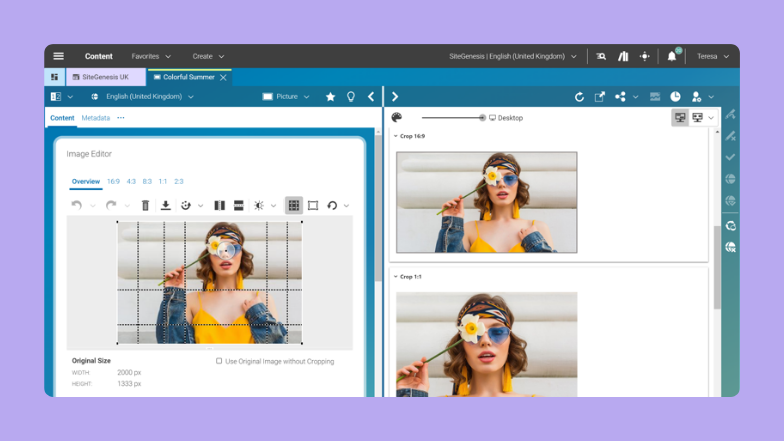
Pros:
- True hybrid headless architecture for omnichannel delivery
- Intuitive CoreMedia Studio with with WYSIWYG editing and real-time previews across devices, languages and personalization states
- Seamless integration with SAP, Salesforce Commerce and any CRM, analytics or front-end framework
- Enterprise-grade DAM and strong governance tools
- Supports integration with CoreMedia's DXP, enabling performance data, AI-driven personalization and optimization tools, without the need for third-party add-ons
- Native AI that delivers on-brand content while humans stay in control
- Fast time-to-value, with average go-live in 90 days or less
- Global scalability for brands operating across regions and languages
- Flexible deployment options: on-premise, private cloud, public cloud or SaaS
- Enterprise-grade security and reliability.
Cons: Requires a higher initial investment than open-source or legacy platforms, but delivers faster ROI and a lower total cost of ownership (TCO) over time.
Best CMS for: Global brands that demand speed, flexibility, and full control of their digital experience, especially those needing to personalize at scale across complex ecosystems.
2. Adobe Experience Manager (AEM)
Overview: Adobe Experience Manager is a CMS that forms a core part of Adobe’s Digital Experience Platform (DXP), offering strong content, asset and personalization capabilities, especially for companies already using Adobe Marketing Cloud.
Pros:
- Advanced AI-driven personalization powered by Adobe Sensei and Adobe Target
- Integration across Adobe’s ecosystem (Analytics, Creative Cloud, etc.)
- Enterprise-grade DAM and strong governance tools
- Comprehensive marketing suite
- Robust capabilities for large-scale content operations.
Cons:
- High total cost of ownership, including licensing, implementation and maintenance
- Limited flexibility when integrating non-Adobe tools or adopting composable architectures
- Heavy implementation cycles and dependency on Adobe-certified partners
- Steep learning curve for marketers, often requiring ongoing developer support for routine tasks
- Forced cloud migrations can disrupt operations and increase costs
- Not headless by default, which can complicate omnichannel delivery.
Best CMS for: Large enterprises with mature Adobe-specialized digital teams, long-term budgets and a deep investment in the Adobe ecosystem. AEM excels in controlled, centralized environments but can be overkill for businesses seeking agility, modularity or fast time-to-market.
Read more: Adobe AEM vs. CoreMedia
3. Sitecore
Overview: Sitecore goes beyond a traditional CMS by offering a DXP that includes features like personalization, e-commerce and marketing automation. While its CMS has historically been recognized for its power and depth, rather than ease of use, the company has recently evolved into a more composable architecture with the launch of Sitecore XM Cloud.
Pros:
- One-to-one personalization at scale, with built-in testing and optimization tools
- Extensive campaign management and workflow automation for complex marketing needs
- Commerce and content integration for personalized shopping experiences.
Cons:
- High implementation complexity, especially for customers on legacy versions
- Non-intuitive UI and steep learning curve for marketers, often requiring developer support
- Limited integration flexibility due to its packaged architecture and acquisitions
- Heavy reliance on partners for configuration, upgrades and maintenance
- Long time-to-value and high ownership costs, even for basic functionality.
Best CMS for: Enterprises looking for a full-suite marketing platform.
Read more: Sitecore vs. CoreMedia
4. WordPress
Overview: WordPress remains the world’s most-used CMS, with a massive open-source community and plugin ecosystem. For enterprises, WordPress VIP adds security, scalability and support, making it a more viable option for high-traffic content hubs. However, WordPress is still best suited for straightforward publishing needs rather than complex enterprise architectures.
Pros:
- Familiar and user-friendly interface
- Extensive plugin ecosystem for feature extension
- Rapid deployment
- Cost-effective entry point, especially for content-centric websites
Cons:
- Limited native support for omnichannel delivery and personalization
- Managing multi-language sites and approval workflows can be complex
- Headless capabilities require custom development and architectural workarounds
- Plugin overload can lead to performance, compatibility, and security issues at scale
- Struggles with scalability and performance dynamic or deeply integrated environments.
Best CMS for: Media organizations, blogs, publishers and marketing teams with simple content models, limited integration needs and a focus on speed and ease of use over deep composability.
5. Drupal
Overview: Drupal is an open-source CMS known for its flexibility and extensibility. It's popular among governments, universities and institutions that require advanced content structures, multilingual capabilities and strict access control.
Pros:
- Rich content modeling and granular user access control
- Enterprise-grade security
- Built-in multilingual support for global content delivery
- Large developer community and module ecosystem
- No licensing fees, ideal for open-source-driven organizations
Cons:
- Developer-heavy setup and maintenance, with limited out-of-the-box usability
- Steep learning curve for non-technical users
- Not inherently headless-first, requiring additional work for decoupled or omnichannel delivery
Best CMS for: Organizations with strong in-house development capacity and need for open-source control.
6. Contentful
Overview: Contentful is a API-first headless CMS, purpose-built for digital teams that need to deliver content across multiple channels from a centralized hub. Its architecture completely decouples content from presentation, offering maximum flexibility for developers and front-end teams to build custom experiences across web, mobile, in-app, and emerging channels.
Pros:
- Great developer experience with structured content modeling and powerful APIs
- Fast global content delivery via CDN
- Framework-agnostic integration (e.g., React, Vue, Angular)
- Cloud-native scalability with high reliability and performance
- Rich localization and multilingual content support
- Composable architecture with integrations via the Contentful App Marketplace
- Role-based workflows and publishing controls for enterprise teams.
Cons:
- Steep learning curve: Editors rely heavily on structured content, with limited visual editing tools
- High developer dependence for page creation and layout
- Limited native personalization or marketing automation tools
- Costs can rise significantly as usage and API calls increase.
Best CMS for: Developer-led organizations and digital product teams that have mature front-end workflows and need highly flexible content delivery infrastructure.
7. Strapi
Overview: Strapi is a open-source headless CMS built on Node.js. It offers developers flexibility and control over content APIs and infrastructure, making it attractive to teams that want to self-host and customize every aspect of their CMS. With support for both REST and GraphQL, Strapi’s open-source nature makes it appealing for developers to create custom digital experiences
Pros:
- Fully open-source with no licensing fees (MIT license)
- Self-hosting options for complete infrastructure and data control
- Modern tech stack (JavaScript/TypeScript, Node.js)
- Highly customizable via plugin architecture
- Flexible content modeling and role-based access control
- Native support for REST and GraphQL APIs
- Fast setup for Jamstack or custom front-end frameworks
- Active community and ecosystem.
Cons:
- Limited visual editing capabilities for non-technical users
- No native personalization, A/B testing or campaign management features
- Lacks built-in DAM or multilingual tools
- Requires DevOps resources for hosting, scaling and maintenance
- Cloud offering (Strapi Cloud) still maturing for enterprises.
Best CMS for: Developer-heavy teams and tech startups seeking full CMS flexibility and data control, especially when customization and self-hosting are top priorities. <
Enterprise CMS comparison
| CMS | Architecture | Best for | Key benefit | Main challenge |
| CoreMedia | Hybrid Headless + APIs | Global enterprises, eCommerce, driving conversions | Speed, personalization, scale, integrated AI | Up-front investment |
| Adobe AEM | Monolithic + APIs | Adobe ecosystem users | AI, DAM, integration depth | Complex and costly |
| Sitecore | Monolithic + APIs | Need for a full-suite marketing platform | Rich campaign tools | Heavy dev reliance |
| Wordpress | Monolithic | Simpler websites | Familiar, cost-effective | Not enterprise-grade natively |
| Drupal | Traditionally Monolithic | Open-source, high control environments | Flexibility, community | Dev-heavy, not marketer-friendly |
| Contentful | Pure Headless | Developer-led product teams | Developer flexibility and scale | Minimal editor tools, no native CX |
| Strapi | Pure Headless | Self-hosted, developer-led setups | Open-source, full control | Lacks native enterprise features |
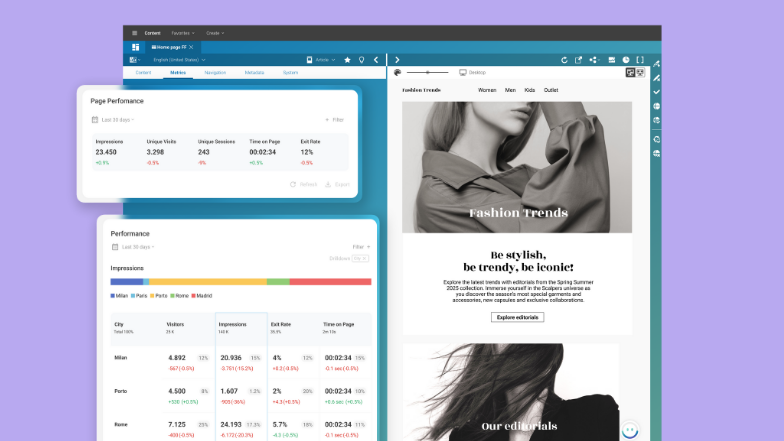
What should CMOs and IT leaders focus on now?
In 2026 and beyond, agility, smooth integration and standout customer experiences aren’t optional. Your CMS should be doing the heavy lifting by:
- Delivering personalized content at every touchpoint
- Integrating cleanly with eCommerce, CRM and AI tools
- Empowering both marketers and developers to move fast and freely
- Scaling globally without slowing teams down.
That’s exactly why hybrid headless platforms like CoreMedia are gaining serious traction. You get the reliability and governance of an enterprise DXP, paired with the flexibility of modern development, without a rigid frontend, endless custom builds and compromise.
If you're looking to modernize your digital experience stack and actually drive results, CoreMedia is built to scale with you.
